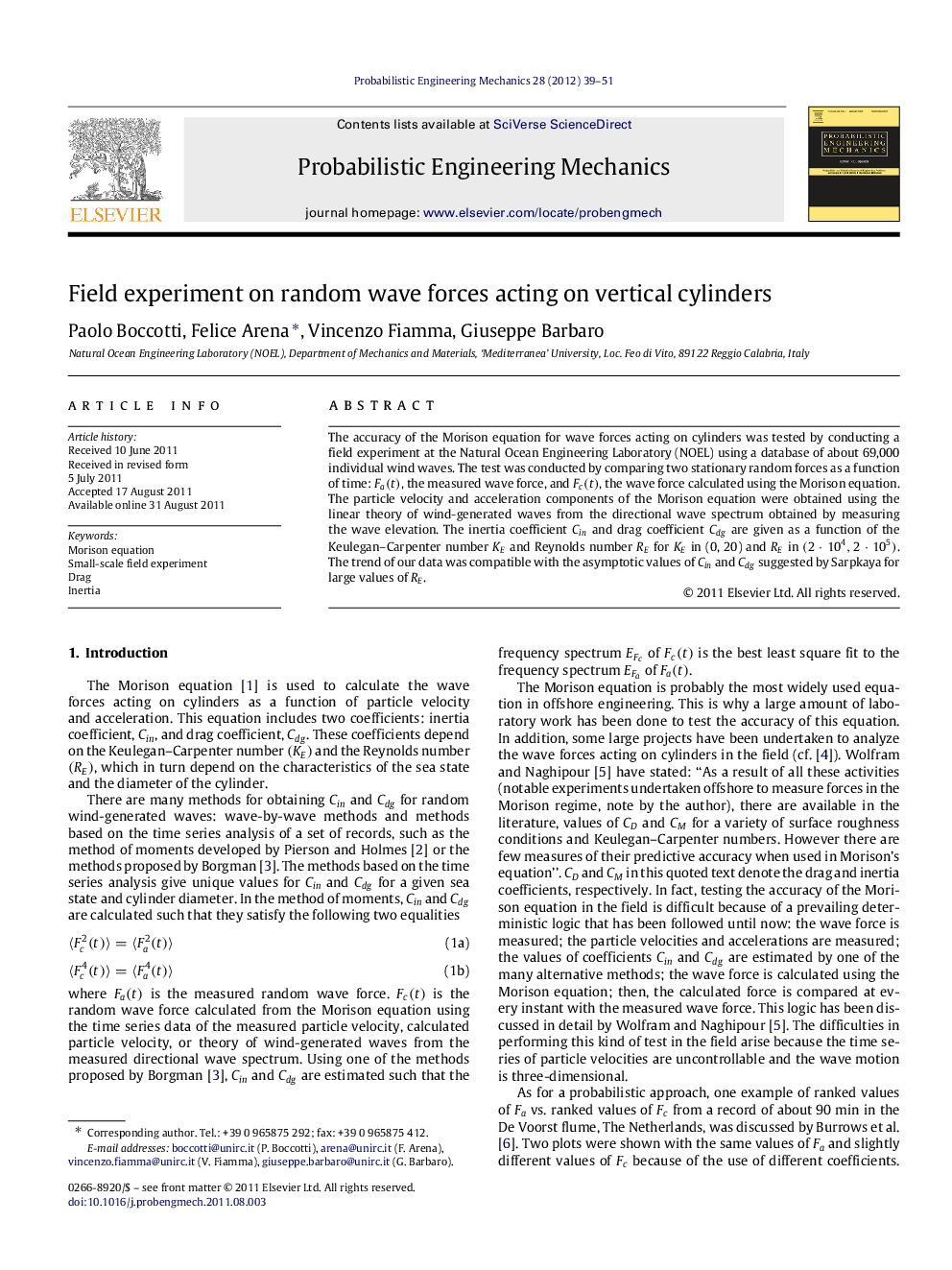| Article ID | Journal | Published Year | Pages | File Type |
|---|---|---|---|---|
| 806116 | Probabilistic Engineering Mechanics | 2012 | 13 Pages |
The accuracy of the Morison equation for wave forces acting on cylinders was tested by conducting a field experiment at the Natural Ocean Engineering Laboratory (NOEL) using a database of about 69,000 individual wind waves. The test was conducted by comparing two stationary random forces as a function of time: Fa(t)Fa(t), the measured wave force, and Fc(t)Fc(t), the wave force calculated using the Morison equation. The particle velocity and acceleration components of the Morison equation were obtained using the linear theory of wind-generated waves from the directional wave spectrum obtained by measuring the wave elevation. The inertia coefficient CinCin and drag coefficient CdgCdg are given as a function of the Keulegan–Carpenter number KEKE and Reynolds number RERE for KEKE in (0, 20) and RERE in (2⋅104,2⋅105)(2⋅104,2⋅105). The trend of our data was compatible with the asymptotic values of CinCin and CdgCdg suggested by Sarpkaya for large values of RERE.
► A field experiment on wave forces on rigid cylinders was performed at the NOEL lab. ► The experiment covered the ranges (0, 20) of Keulegan and (2×104,2×105) of Reynolds. ► The actual random process was compared with a process based on the Morison equation.
